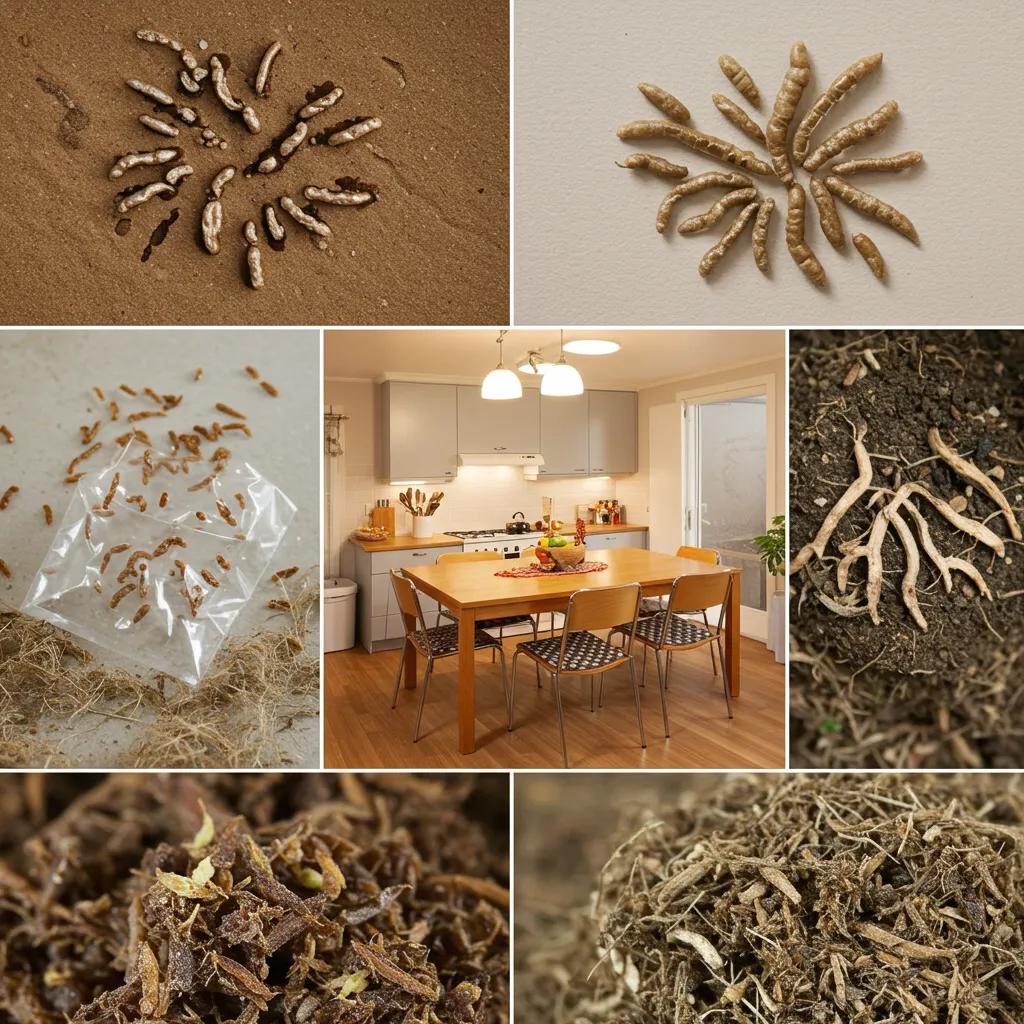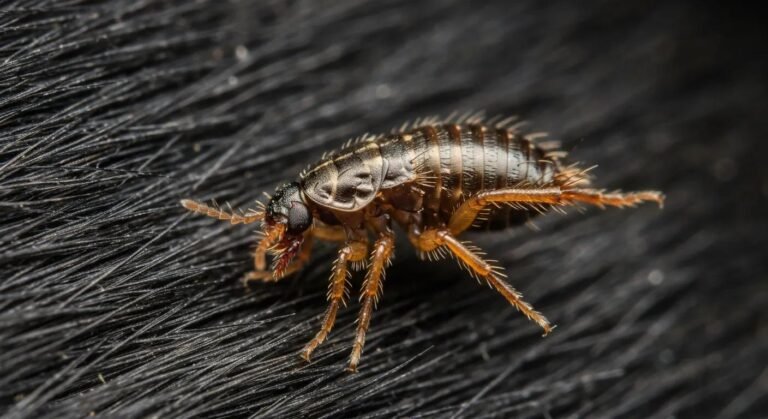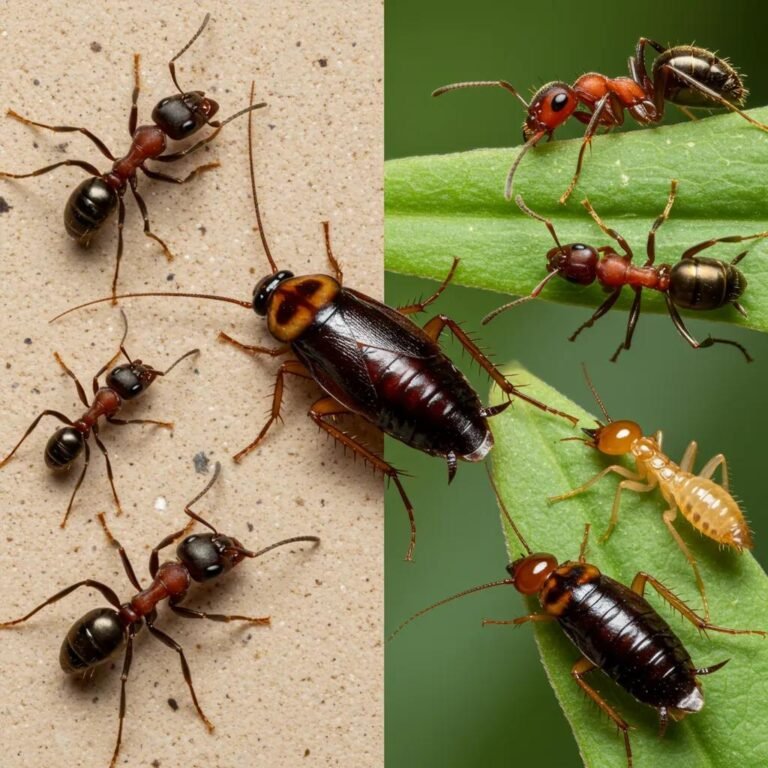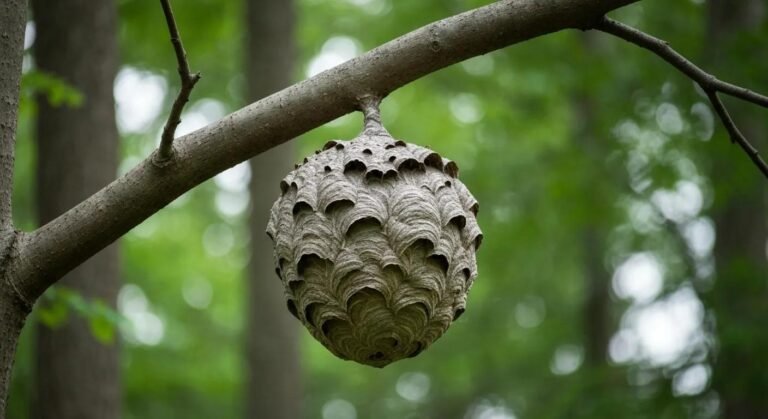Early pest infestation means critters or insects are moving into living or working spaces and starting to breed, contaminate areas, or damage property. Catching those signs early reduces health risks, prevents structural problems, and avoids bigger repair bills. This guide walks homeowners and business owners in South Florida through the most reliable early clues—visual traces, smells and noises, and environmental triggers—and explains when to try quick DIY fixes versus calling a pro. You’ll find universal warning signs, pest-specific cues for rodents, ants, cockroaches, termites, and mosquitoes, plus prevention tips tuned to Palm Beach and Broward conditions. Read on to learn how to document evidence, lower immediate risks, and decide whether to request a free estimate or schedule targeted service.
What Are the Early Signs of Pest Infestation in Your Home or Business?
Early signs are repeatable clues that animals or insects are present and active. They come from feeding, nesting, movement, or reproduction and point to what the pests are doing. Spotting these markers early helps stop infestations before they grow by addressing root causes like entry points or excess moisture. Main signals include physical traces (droppings, gnaw marks), sensory clues (odors, noises), and behavioral hints (pets or people noticing activity). Once you see possible signs, a short documentation and exclusion checklist will help you decide whether to monitor, clean, or call a professional for inspection and treatment.
Which Common Warning Signs Indicate a Pest Problem?

Common warning signs give quick, actionable clues and usually show up in predictable spots: kitchens, attics, garages, and around foundation lines. Droppings are one of the clearest indicators because their shape and size help identify the species. Fresh chew marks and frass point to active feeding, and visible nests, shed skins, or debris trails show reproduction or nesting. Focus inspections on baseboards, under sinks, behind appliances, and attic insulation during daylight. Take photos and note locations—those details speed up accurate identification and targeted treatment.
How Do Unexplained Odors, Noises, and Pet Behavior Signal Pest Activity?
Smells, nighttime noises, and sudden pet behavior often reveal hidden nests or heavy pest activity before you see anything. A persistent oily or musty odor in cabinets or basements can mean rodent urine or a heavy cockroach presence. Repetitive scratching or scurrying in walls or attics at night usually signals nocturnal rodents. Pets frequently find nests first—pawing, sniffing, or avoiding certain spots are good clues. Use these sensory signals to guide your search: follow smells to cabinets or insulation, trace noises to attic spaces, and check places your pet keeps returning to.
How Can You Recognize Specific Pest Infestation Signs?
Different pests leave different evidence. Matching what you find to the likely pest narrows treatment options and cuts wasted effort. For South Florida pests—rodents, ants, cockroaches, termites, and mosquitoes—look for size-specific droppings, trail patterns, wood damage, and nesting materials. Inspect attics, crawlspaces, foundation perimeters, and landscaping edges to locate entry points and nesting sites that explain the signs.
The table below offers a quick comparison to help match what you see with likely pests and sensible first steps.
| Pest Type | Common Signs | Likely Locations | Immediate Action |
|---|---|---|---|
| Rodents (rats, mice) | Pellet droppings, fresh gnaw marks, nests made from shredded material | Attic, garage, wall voids, pantry | Photograph and document droppings, seal visible gaps, remove accessible food |
| Ants (foraging, carpenter) | Foraging trails, small soil mounds, wood shavings (frass) | Kitchen, baseboards, yard near foundations | Trace trail to origin, reduce food/soil access, monitor for new activity |
| Cockroaches | Black droppings, oily smear marks, ootheca (egg cases) | Kitchens, bathrooms, basements | Deep clean, eliminate food/water, set monitoring traps |
This quick match helps focus inspections and short-term containment—knowing which pest you’re likely facing shortens the path to effective corrective action and prepares you for a pro inspection if needed.
What Are the Key Signs of Rodent Infestation Like Rats and Mice?

Rodent activity usually shows clear, reliable clues that help estimate species and severity. Droppings are tapered or capsule-shaped—mouse droppings are small like rice grains, rat droppings are larger—so measure and photograph samples for ID. Fresh gnaw marks look lighter and rough where material was recently chewed; nests made of shredded insulation, paper, or fabric in attics or voids indicate breeding. Nighttime noises, urine smells in confined spaces, and chewed packaging are urgent signs because rodents contaminate food and can damage wiring. Start by sealing entry points and improving sanitation to reduce attraction.
How to Identify Ant Infestation Through Trails, Mounds, and Wood Damage?
Ant problems commonly announce themselves through foraging trails and, in some species, structural damage. Visible ant lines trace scent paths to food and often lead back to entry crevices. Small soil mounds near foundations suggest yard nests. Carpenter ants leave wood shavings and smooth galleries in damp or softened lumber—different from the mud-filled tunnels termites create—so check moisture-prone areas. If trails persist after cleaning, call for a professional inspection to locate the nest and choose the right baiting or removal method.
What Are the Visible Signs of Cockroach, Termite, and Mosquito Problems?
Cockroaches, termites, and mosquitoes each leave distinct, visible signs that help determine urgency and next steps. Cockroaches leave granular droppings, smear marks, and egg casings near hiding spots and food sources—signs of sanitation gaps and heavy activity. Termites create mud tubes, drop wings after swarming, and make wood sound hollow when tapped, which signals active wood-feeding and possible structural risk. Mosquito issues show up as standing water, visible larvae, and more dusk or dawn bites—evidence of nearby breeding. Identifying these signs quickly helps you decide whether to act now or call a specialist.
Use the table below to match common signs with likely meaning, urgency, and who to call.
| Sign | What It Typically Means | How Urgent It Is | Who To Call |
|---|---|---|---|
| Black granular droppings | Active cockroach population in kitchens or basements | High — health and contamination concern | Pest control for sanitation-focused treatment |
| Mud tubes or discarded wings | Subterranean termite activity feeding on wood | Very high — structural risk | Termite specialist for inspection and treatment |
| Standing water with larvae | Local mosquito breeding sites raising bite and disease risk | Medium–high during mosquito season | Mosquito control pros or sanitation teams |
The table clarifies which visible signs need immediate professional inspection because of health or structural threats and which you can start addressing yourself.
How to Spot Cockroach Droppings, Smear Marks, and Egg Casings?
Cockroach evidence concentrates where food, moisture, and dark shelter meet. Droppings look like coarse black pepper or coffee grounds and collect along baseboards or in cabinet corners; smear marks are greasy streaks left when roaches move across surfaces. Egg casings (oothecae) are dark, elongated capsules tucked into tight crevices near heat or food and indicate reproduction nearby. Immediate steps: deep clean, remove food and water access, set monitoring traps, and document findings. If signs persist, schedule professional treatment to remove hiding spots and seal access points.
What Are the Warning Signs of Termite Damage and Mud Tubes?
Termite damage can resemble wood rot but has telltale differences. Mud tubes are pencil-thick, soil-filled tunnels on foundations or supports that termites use to travel between soil and wood; discarded wings near windows or doors mean swarming and colony establishment. Wood that sounds hollow when tapped or flakes easily is a sign of internal wood loss; small piles of frass-like material point to drywood activity. Because termites threaten structure, these signs should prompt a professional inspection as soon as possible.
How to Detect Mosquito Breeding and Increased Bites Around Your Property?
Mosquito problems are driven by the environment and show up as standing water, larvae, and more bites at dawn and dusk. Check containers, gutters, birdbaths, clogged drains, and landscape features that hold water for more than a few days—larvae look like tiny wrigglers at the water surface. If you see a spike in bites or hear reports of local mosquito-borne disease, escalate to source reduction and professional treatment of breeding sites. Early habitat management dramatically reduces adult populations and disease risk.
When Should You Call Pest Control Services for Professional Help?
Call a professional when you see evidence of reproduction, structural damage, health risk, or when DIY steps don’t reduce activity. Urgent triggers include termite signs, persistent rodents that chew wiring or contaminate areas, large cockroach populations, and confirmed mosquito breeding linked to increased bites or local disease. Professionals offer a multi-step approach—inspection, species ID, a customized treatment plan, targeted application, and follow-up—using methods that balance effectiveness with safety for people and pets. Early professional help often lowers total cost and damage and sets up a prevention plan to keep pests away.
- Get professional help if signs show structural damage—delaying increases repair costs and hazards.
- Call a pro when infestations persist after several weeks of reasonable DIY efforts.
- Bring in professionals if the infestation involves disease-spreading pests like cockroaches or mosquitoes.
- Contact a pro when you find active nesting in attics, wall voids, or other inaccessible areas.
Putting off professional treatment can turn a manageable issue into a larger infestation. Use the triggers above to decide when to move from monitoring to treatment.
When you need local, certified help, Bugsy’s Pest Solutions is a veteran-owned, family-operated provider based in Lake Worth Beach, serving Palm Beach and Broward counties including Boca Raton. Their certified technicians are trained in eco-friendly, pet- and family-safe methods. Bugsy’s process focuses on finding root causes, applying targeted treatments, and following up under a guarantee. They offer free estimates and can schedule an inspection to confirm the species and recommend corrective actions. A local expert tailors plans to South Florida’s specific pest pressures and seasonal patterns.
What Are the Risks of Delaying Pest Control Intervention?
Delaying intervention raises the chance of more property damage, health risks, and higher long-term costs because pests reproduce and spread over time. Structural threats—termite wood loss or rodent-damaged wiring—accelerate when left untreated and can become major repairs and safety hazards. Health risks grow as cockroach contamination and mosquito exposure increase the likelihood of allergic reactions or vector-borne disease. Early detection and action keep infestations from reaching exponential growth, making remediation simpler, less intrusive, and less expensive.
How Do Professional Pest Control Services Provide Safe and Effective Solutions?
Professional pest control generally follows a clear sequence: thorough inspection, species identification, a customized treatment plan that addresses root causes, targeted application, and scheduled follow-up to confirm control and prevention. Technicians choose tactics that balance effectiveness with safety—often favoring lower-toxicity, pet- and family-safe options—and they document entry points and habitat changes to prevent recurrence. A good provider also teaches homeowners sanitation, exclusion, and maintenance steps that prolong results. Checking credentials and guarantees sets clear expectations for follow-up and long-term protection.
Why Choose Bugsy’s Pest Solutions for Pest Control in South Florida?
Bugsy’s Pest Solutions pairs South Florida expertise with clear service commitments for homeowners and businesses facing local pest pressures. As a veteran-owned, family-operated company in Lake Worth Beach, they blend disciplined fieldwork with neighborhood knowledge of seasonal pest behavior. Their certified experts prioritize eco-friendly, pet- and family-safe options while addressing root causes through a full protection process: inspection, targeted treatment, and follow-up. Bugsy’s provides free estimates, backs work with guarantees, and serves Palm Beach and Broward counties including Boca Raton.
- Veteran-owned—disciplined service and local accountability you can trust.
- Certified technicians who use eco-friendly, pet-safe options whenever practical.
- Free estimates and guaranteed results so you know the scope and expected outcome before committing.
This mix of local focus, safety-minded treatment, and clear guarantees helps property owners choose a provider that fits practical prevention and remediation goals while minimizing family and pet exposure.
What Makes Bugsy’s Veteran-Owned, Eco-Friendly Pest Control Unique?
Bugsy’s veteran-owned, family-run approach emphasizes reliability, accountability, and attention to detail—qualities homeowners appreciate when dealing with pests. Their eco-friendly focus means plans favor lower-toxicity options and integrated measures—inspection, exclusion, and sanitation—to reduce chemical reliance and protect household safety. Local knowledge of South Florida pests leads to more accurate diagnosis and seasonally tuned prevention advice, lowering the chance of repeat infestations. Choosing a team that blends these elements helps ensure effective results and sensible risk management.
How Does Bugsy’s Guarantee Results and Offer Free Estimates?
Bugsy’s provides free estimates so you can understand infestation scope, likely treatments, and prevention steps without upfront cost. Estimates set expectations for timing and follow-up. Their guarantee commonly includes follow-up visits or re-treatment if the agreed measures don’t resolve the problem, giving you confidence that the provider stays engaged until the issue is managed. Request an estimate and review the guarantee during the inspection—this clarifies responsibilities and timelines for treatment and prevention. Local coverage ensures responsive service across Palm Beach and Broward counties.
How Can You Prevent Future Pest Infestations and Protect Your Property?
Preventing future infestations relies on exclusion, sanitation, moisture control, and habitat modification. These steps reduce attraction and remove breeding or nesting opportunities. In South Florida’s warm, humid climate, managing standing water, trimming vegetation away from structures, and sealing gaps around foundations and vents make a big difference. Regular attic checks and addressing compromised insulation or sanitation reduce rodent harborage; professional attic sanitation and insulation replacement restore energy efficiency and remove nesting materials.
Below is a comparison of prevention measures showing what each protects against, whether it’s DIY-friendly, and the estimated benefit.
| Prevention Measure | What It Protects Against | DIY or Pro | Estimated Benefit |
|---|---|---|---|
| Seal gaps and vents | Rodent and insect entry | DIY for small gaps / Pro for structural repairs | High reduction in new entries |
| Remove standing water | Mosquito breeding | DIY (routine checks) / Pro for stormwater issues | High reduction in mosquitoes |
| Attic sanitation & insulation replacement | Rodent nests, contamination, energy loss | Pro recommended for assessment and replacement | High for long-term rodent control and efficiency |
This comparison shows which prevention steps homeowners can start right away and which deserve professional assessment for safety and effectiveness.
What Are Best Practices for Pest Prevention in South Florida Homes?
Best practices mix routine checks, habitat reduction, and structural upkeep tailored to the local climate and landscape to lower pest pressure year-round. Key actions: remove standing water, improve drainage, trim vegetation away from walls, store firewood and debris away from foundations, and seal gaps around plumbing, vents, and doors. Sanitation is critical—store food in sealed containers, clean crumbs and grease promptly, and manage pet food access. Keep a seasonal checklist and document maintenance so you catch weak points before pests do. If problems persist, professional preventive services can close gaps and apply targeted treatments.
- Remove or treat standing water weekly to break mosquito breeding cycles.
- Keep vegetation trimmed several feet from exterior walls to reduce harborage.
- Store food and pet supplies in sealed containers and clean food prep areas daily.
- Inspect and seal foundation gaps, vent openings, and roofline penetrations to block entry.
These steps reduce the conditions that invite pests and pair well with professional exclusion and treatment strategies.
How Does Attic Sanitation and Insulation Help Control Rodent Damage?
Attic sanitation and replacing insulation address immediate contamination and the longer-term weaknesses that invite re-infestation. Rodents tear up insulation for nests, contaminate it with droppings and urine, and create pathways through damaged barriers. Removing contaminated insulation and sanitizing the attic cuts allergens and contamination risks. Installing new insulation restores thermal performance, lowers energy bills, and removes nesting material that could attract returning rodents. Because attic work involves heavy cleaning and proper insulation handling, professional attic sanitation and insulation replacement are recommended for thorough decontamination and correct installation.
This step links detection to long-term protection: removing nesting materials and restoring insulation reduces health hazards and the chance rodents will re-establish nests, completing a prevention cycle that works with exclusion and habitat management.
- Regular inspection schedule: Quarterly checks of vulnerable areas help catch issues early.
- Document and photograph signs: Clear records speed diagnosis and professional response.
- Combine DIY and professional measures: Use sanitation and sealing for immediate gains and call pros for inaccessible or high-risk areas.
Frequently Asked Questions
What are the health risks associated with pest infestations?
Pests can create real health risks for people and pets. Cockroaches can aggravate asthma and allergies; rodents can carry diseases like hantavirus or leptospirosis; and mosquitoes can transmit illnesses such as West Nile virus. Pests also contaminate food and surfaces with droppings, urine, and saliva, raising the risk of foodborne illness. Early detection and prompt action reduce these risks and help keep your home safe.
How can I document signs of pest infestation effectively?
Take clear photos of droppings, nests, and any visible damage, and note exact locations and times. Keep a simple log with dates and descriptions—include odd pet behavior or unusual odors. These details help pest pros identify the species and the infestation’s scope and speed up an effective treatment plan.
What DIY methods can I use to manage minor pest issues?
For minor problems, basic steps often help: clean thoroughly to remove food sources, seal obvious entry points, and use traps or baits appropriate for the pest. Natural deterrents like vinegar or essential oils can help with some insects, and fixing leaks and removing standing water prevents mosquito breeding. If the issue continues or worsens, call a professional for a complete solution.
How often should I schedule pest inspections for my property?
Frequency depends on location, property history, and nearby conditions. A yearly professional inspection is a good baseline. Properties in high-risk areas or with prior infestations may benefit from quarterly checks. Regular inspections catch issues early and reduce the chance of severe infestations.
What should I do if I suspect a pest infestation but see no visible signs?
If you suspect pests but don’t see them, watch for indirect signs—odd noises, unexplained odors, or changes in pet behavior. Set traps to help confirm presence and consult a pest pro for a thorough inspection of hidden areas like attics and crawlspaces. Early professional checks can find problems before visible damage appears.
Are there eco-friendly pest control options available?
Yes. Many companies use integrated pest management (IPM) strategies that emphasize prevention, habitat modification, and low-toxicity or natural products. Homeowners can also use diatomaceous earth or essential oils for some pests. Always ask about eco-friendly options when you request service to align treatment with family and pet safety.
Conclusion
Recognizing the early signs of pest infestations is crucial for maintaining a safe and healthy environment in your home or business. By acting promptly, you can prevent health risks, structural damage, and costly repairs associated with unchecked pest activity. If you suspect an infestation, consider reaching out to a professional for a thorough inspection and tailored treatment plan. Explore Bugsy’s Pest Solutions today to safeguard your property against pests effectively.








